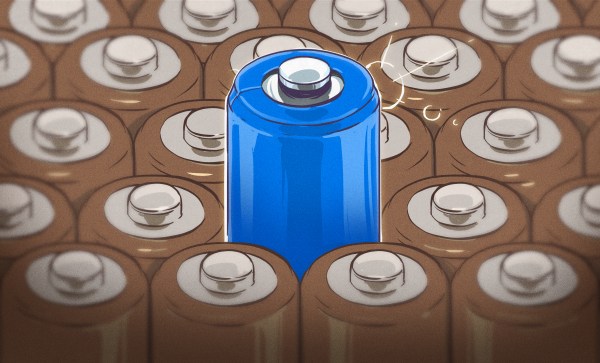We’re always a wee bit suspicious about articles that announce some sort of “World’s first” accomplishment. With a couple of hundred thousand years of history, most of which wasn’t recorded, over which something like 117 billion humans have lived, any claims of primacy have to be taken with a grain of salt. So when the story of the world’s first instance of a car being hit by a meteorite came across our feed, we had to check it out. The car in question, a Tesla, was being driven in South Australia by veterinarian Andrew Melville-Smith when something suddenly crashed into its windshield.
Author: Dan Maloney3371 Articles
Hackaday Links: October 26, 2025
There was a bit of a kerfuffle this week with the news that an airliner had been hit by space junk. The plane, a United Airlines 737, was operating at 36,000 feet on a flight between Denver and Los Angeles when the right windscreen was completely shattered by the impact, peppering the arm of one pilot with bits of glass. Luckily, the heavily reinforced laminated glass stayed intact, but the flight immediately diverted to Salt Lake City and landed safely with no further injuries. The “space junk” report apparently got started by the captain, who reported that they saw what hit them and that “it looked like space debris.”
We were a little skeptical of this initial assessment, mainly because the pilots and everyone aboard the flight were still alive, which we’d assume would be spectacularly untrue had the plane been hit by anything beyond the smallest bit of space junk. As it turns out, our suspicions were justified when Silicon Valley startup WindBorne Systems admitted that one of its high-altitude balloons hit the flight. The company, which uses HABs to gather weather data for paying customers, seems to have complied with all the pertinent regulations, like filing a NOTAM, so why the collision happened is a bit of a mystery.
Ask Hackaday: When Good Lithium Batteries Go Bad
Friends, I’ve gotten myself into a pickle and I need some help.
A few years back, I decided to get into solar power by building a complete PV system inside a mobile trailer. The rationale for this doesn’t matter for the current discussion, but for the curious, I wrote an article outlining the whole design and build process. Briefly, though, the system has two adjustable PV arrays mounted on the roof and side of a small cargo trailer, with an integrated solar inverter-charger and a 10-kWh LiFePO4 battery bank on the inside, along with all the usual switching and circuit protection stuff.
It’s pretty cool, if I do say so myself, and literally every word I’ve written for Hackaday since sometime in 2023 has been on a computer powered by that trailer. I must have built it pretty well, because it’s been largely hands-off since then, requiring very little maintenance. And therein lies the root of my current conundrum.
Continue reading “Ask Hackaday: When Good Lithium Batteries Go Bad”
Hackaday Links: October 19, 2025
After a quiet week in the news cycle, surveillance concern Flock jumped right back in with both feet, announcing a strategic partnership with Amazon’s Ring to integrate that company’s network of doorbell cameras into one all-seeing digital panopticon. Previously, we’d covered both Flock’s “UAVs as a service” model for combating retail theft from above, as well as the somewhat grassroots effort to fight back at the company’s wide-ranging network of license plate reader cameras. The Ring deal is not quite as “in your face” as drones chasing shoplifters, but it’s perhaps a bit more alarming, as it gives U.S. law enforcement agencies easy access to the Ring Community Request program directly through the Flock software that they (probably) already use.
Hackaday Podcast Episode 342: Poopless Prints, Radio In Your Fillings, And One Hyperspectral Pixel At A Time
It was Elliot and Dan on the podcast today, taking a look at the best the week had to offer in terms of your hacks. We started with surprising news about the rapidly approaching Supercon keynote; no spoilers, but Star Trek fans such as we who don’t have tickets will be greatly disappointed.
Elliot waxed on about taking the poop out of your prints (not pants), Dan got into a camera that adds a dimension to its images, and we both delighted in the inner workings of an air-powered squishy robot.
Questions? We’ve got plenty. Is it possible to take an X-ray without an X-ray tube? Or X-rays, for that matter? Did Lucille Ball crack a spy ring with her fillings? Is Algol set to take over the world? What’s inside a germanium transistor? How does a flipping fish say Happy Birthday? And how far down the Meshtastic rabbit hole did our own Tom Nardi fall? Tune in to find out the answers.
The Great Northeast Blackout Of 1965
At 5:20 PM on November 9, 1965, the Tuesday rush hour was in full bloom outside the studios of WABC in Manhattan’s Upper West Side. The drive-time DJ was Big Dan Ingram, who had just dropped the needle on Jonathan King’s “Everyone’s Gone to the Moon.” To Dan’s trained ear, something was off about the sound, like the turntable speed was off — sometimes running at the usual speed, sometimes running slow. But being a pro, he carried on with his show, injecting practiced patter between ad reads and Top 40 songs, cracking a few jokes about the sound quality along the way.
Within a few minutes, with the studio cart machines now suffering a similar fate and the lights in the studio flickering, it became obvious that something was wrong. Big Dan and the rest of New York City were about to learn that they were on the tail end of a cascading wave of power outages that started minutes before at Niagara Falls before sweeping south and east. The warbling turntable and cartridge machines were just a leading indicator of what was to come, their synchronous motors keeping time with the ever-widening gyrations in power line frequency as grid operators scattered across six states and one Canadian province fought to keep the lights on.
They would fail, of course, with the result being 30 million people over 80,000 square miles (207,000 km2) plunged into darkness. The Great Northeast Blackout of 1965 was underway, and when it wrapped up a mere thirteen hours later, it left plenty of lessons about how to engineer a safe and reliable grid, lessons that still echo through the power engineering community 60 years later.
Hackaday Links: October 12, 2025
We’ve probably all seen some old newsreel or documentary from The Before Times where the narrator, using his best Mid-Atlantic accent, described those newfangled computers as “thinking machines,” or better yet, “electronic brains.” It was an apt description, at least considering that the intended audience had no other frame of reference at a time when the most complex machine they were familiar with was a telephone. But what if the whole “brain” thing could be taken more literally? We’ll have to figure that out soon if these computers powered by miniature human brains end up getting any traction.














